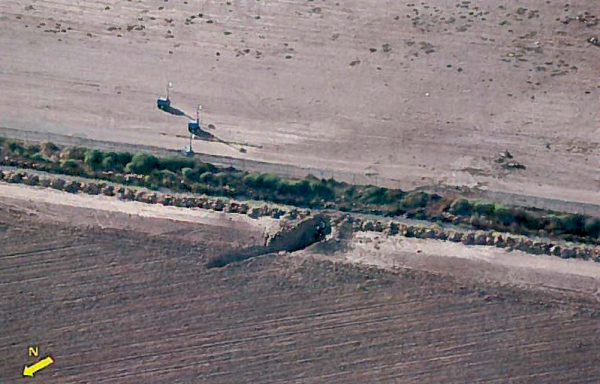What's left of the F-16 following the bird strike.
The pilot saw “three dark flashes” flit in front of his F-16 fighter as he pulled up following a touch-and-go landing during a training flight last June 26 in Arizona. An acrid smell and buzzing instantly filled Radon 11’s cockpit. Then came a “pop” from the plane’s engine, followed by a “bang.” A pilot aboard Honker 11, a second F-16 4,000 feet behind Radon 11, saw an orange flame and sparks spitting from its engine. “Tower, Radon 11, emergency,” the first pilot radioed Luke Air Force Base. “We’ve got a bird strike…engine’s about to stall.”
Nothing concentrates a pilot’s mind like running out of sky by losing power close to the ground. “This created a worst-case emergency for a single-engine aircraft: low and slow with a questionable ability to produce thrust,” says the Air Force’s recently-released investigation into the accident.
But although three unidentified small birds triggered the emergency by flying into the F-16’s engine, the pilot at the controls of Radon 11 caused the ensuing crash, according to the investigation. While we noted earlier this week that bird strikes are a big problem for the Air Force, the crash of Radon 11 makes clear that such avian collisions are not tantamount to a Bail-Out-for-Free card.
Bird strikes are an occupational hazard for all pilots, and have downed 39 Air Force planes and killed 33 airmen since 1973. “Interviews conducted with airfield operations personnel and United States Department of Agriculture base representative validated bird counts were conducted the morning of the mishap as well as at midday and sunset. These counts indicated a low number of birds observed, resulting in a Bird Condition `Low’ being maintained throughout the day,” investigators found. “Pilots from aircraft in the pattern at the time of the mishap observed no bird activity on the airfield prior to the Mishap Aircraft ingesting birds on climb out from the touch-and-go.”
As the F-16’s engine sputtered following the bird strike, the pilot turned the plane to orient it for an emergency landing. But that reduced the plane’s altitude and speed, convincing the pilot that his plane was doomed. He pointed the plane toward an unpopulated area. He and his student pilot, undergoing refresher training (they had a combined total of 3,000 F-16 flight hours between them) safely ejected moments later. The unidentified pair bailed out at 1,550 feet, below the recommended 2,000-foot minimum.
What was particularly embarrassing in this case was what the plane did next:
Following the ejection, the Mishap Aircraft descended to 1,100 feet Above Ground Level and subsequently recovered to a climbing left hand turn toward the northwest. The Mishap Aircraft reached a point 3.5-4 nautical miles north/northwest of the airfield and an altitude of approximately 6,000 feet Above Ground Level before beginning a sharp left-hand turn back toward Luke Air Force Base. The Mishap Aircraft then descended toward the airfield, passing Honker 11 (providing rescue overwatch for Radon 11) from high to low, and impacted just outside the southwest fence line of Luke Air Force Base after approximately two minutes of post-ejection flight.
In other words, the engine had plenty of life left for a safe landing.
“The Mishap Engine continued providing near full military thrust through impact despite going through periodic stalls,” the investigation says. “Had the Mishap Instructor Pilot elected to climb straight-ahead, it is my opinion that the Mishap Engine was producing enough thrust to permit a climb above minimum controlled ejection altitude and acceleration to minimum recommended maneuvering airspeed,” chief investigator Colonel John Menozzi concludes. “…the Mishap Engine, despite periodic stalls, continued providing sufficient thrust for enough time to have safely recovered the aircraft…By clear and convincing evidence, I find the cause of the mishap was pilot error.”
The $23 million plane, and three birds, were destroyed.


